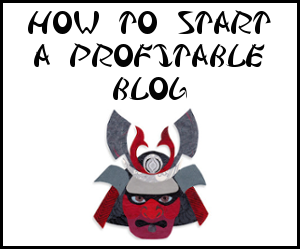Every morning I wake up to multiple alarms as my eyes slowly open. I drag my body around the various aspects of my daily routine. Before I eat a morsel of food, I sit cross-legged on the floor and close me eyes. To many this may seem as a nap, but for me these 30 minutes is a time for introspection. I reflect upon me inner self and pray for success throughout the remainder of the day. I conclude this ritual by apply a tilak chandlo (religious symbol which contains a “U” of sandalwood and a dot of red powder with the center of it) on my forehead.
This daily stamp extends my meditation throughout the day and reminds me of my identity every time I look in the mirror. I had no idea what it meant, but continued it daily. I did it so many times that it became a mechanical task.
As I grew older, I finally understood the meaning behind it and continued this practice with pride.
A few months later, a drop of shame entered the sea of my pride and dignity. As I met new people and my social network grew, all eyes were on the dot. I was labeled with a warning sign. Overtime, this droplet of shame became bigger and bigger turning into a converging sea. Within a matter of time, I began living two different live.
As a youth leader in BAPS, I proudly did my tilak chandlo. Young kids people looked up to me and respected that I had the courage to do such a brave act. I was placed on a pedestal for just doing such an act. This gave me the courage to do tilak chandlo everyday, but as soon as I enter the school bus my image differed. I stared down on the floor trying to hide the ridiculous symbol.
In the 6th grade, we had a substitute teacher. He didn’t know me and I didn’t know him, but he noticed the symbol of my head. He shouted,”Hey bullet hole, come here.” Those words pierced right through me. Red as a tomato, I walked up to the sub as classmate giggled and repeated the phrase. That was the most depressing moment in my life, but I continued to uphold the principles my parents instilled on me.
Another time, I was standing in a group and a kid looks at my forehead and yells, “Sniper!” and fell to the ground. People ridiculed the symbol that I valued. Even though I continued this practice, I began to lose my identity. I began to try to hide this symbol on my head. I grew my hair out so it would cover my tilak chandlo. Other times I placed a bandage over my forehead.
This continued over the years until I reached high school. I saw other people who showed their unique beliefs with pride. For instance, a group of friends dyed their hair purple, pink, and blue never felt embarrassed. If they can, why could I? The following day, I showcased my tilak chandlo to school and surprisingly not a single person asked me about my tilak chandlo.
4 years have gone by and I haven’t felt embarrassed applying tilak chandlo yet. I became me again. I never had to hide my true identity again. I become connected with my culture and became honest with myself. I know who I am, where I came from, and where I want to go again. It’s not easy growing up different, but it in our differences, which make our lives that much more interesting.





Hello! What does BAPS stand for? I have never heard of tilak chandlo, so thank you for writing about and sharing your niche of the world with us.
Hello,
BAPS is an religious organization. Bochasanvasi Shri Aksharpurushottam Swaminarayan Sampraday (BAPS- http://www.baps.org ). It is a well known throughout the world for creating monumental temples in which Hinduism is practiced. Google BAPS Temples to take a look. One of our practices is applying tilak chandlo on our forehead. Its a “U” with a red circle in the middle of it. The symbol represents a devotee bowing down at God’s feet. It is a symbol of humility and sacrifice. It constantly reminds me of my identity. If you have anymore questions, please feel free to ask.
Ravi Barot
I think it’s important to stay true to one’s identity even in the face of ridicule. Ridicule is about lack of conformity, but without individuality we all become the same and our inner spirit can’t shine. Thanks for sharing your story with us!
I agree. Don’t let challenges get you down or make you change who you are. Stay true to yourself and what you want to accomplish. You will never have regrets that way and eventually everything falls into place.
Hi Ravi. Thanks for sharing your story! I’m so glad you have found yourself again and aren’t getting bullied anymore. People can be SO mean, kids especially, and it’s even worse when teachers join in or try to ignore bullying and don’t do anything about it.
I’ve seen people with tilak chandlo before and guessed it for religious reasons but never knew what it was called or what it symbolized. Thanks for enlightening me!
Ravi – I’m glad you’ve fought through the discrimination and are proud of your heritage. Always be proud! Thanks for educating us about the tilak chandlo!
Best, Sam
I never knew the actual name, tilak chandlo. What does it mean?
I’m curious about this too. I couldn’t find too much info online except the word tilak refers to the U shape, and chandlo refers to the dot. Sounds like men wear both together, and married women wear only the chandlo.
It’s difficult to be unique when you’re a kid with a lot of peer pressure. It’s great that you found acceptance and good luck in college!
It’s very hard to be singled out and I congratulate you for getting through it.
However, based on the following ” I continued to uphold the principles my parents instilled on me” How do you know that what you inherited is the truth? (assuming there is 1 truth out there)
Thank you for sharing your struggle with prejudice and religious freedom. Learning about others, their religions, customs and cultures helps us all become better people. Wonderful story.
What a great piece and very important lesson. As kids we all fight what we want to be to be what the world around us expects us to be. We all have our try at conforming and if we are strong enough we break free and do what our true beliefs tell us is right.
wear your symbol with pride and don’t ever care about what others think. If someone doesn’t take you for who you are then they are not worth caring about.
School can be such a harsh environment. So many students find it hard to stay true to their own identity and I’m sure many of us are guilty for conforming and towing the party line, simply because it was an easier option. Hats off to you for safeguarding your integrity and overcoming religious and cultural adversity.
I am glad that you have been able to overcome whatever shame you may have felt. I love what you said at the end: “a group of friends dyed their hair purple, pink, and blue never felt embarrassed. If they can, why could I?”
I hope that you are able to apply this lesson to every aspect of your life. If you do, then you’ll go very far!
Terrific story. Thanks for sharing and educating me. I also felt your pain and angst through your words. I’m glad you overcame your personal obstacles and found yourself again. Very inspiring!
I really enjoyed your story. When I was little, I wore the garment of a Muslim with my hair covered and everything. Children treated me differently and for a while I hated my religion. I’m glad you shared your story. Truly inspiring.
I’m so happy to have grown up here in NYC where kids wore and still wear everything and no one pays attention. Everything from Sikh turbans to the guy always wearing skirts. No one cared. We were just kids and we were all different and different was good. Good luck to you Ravi!
It still surprises me how an adult would make a statement like that. Thanks for sharing!